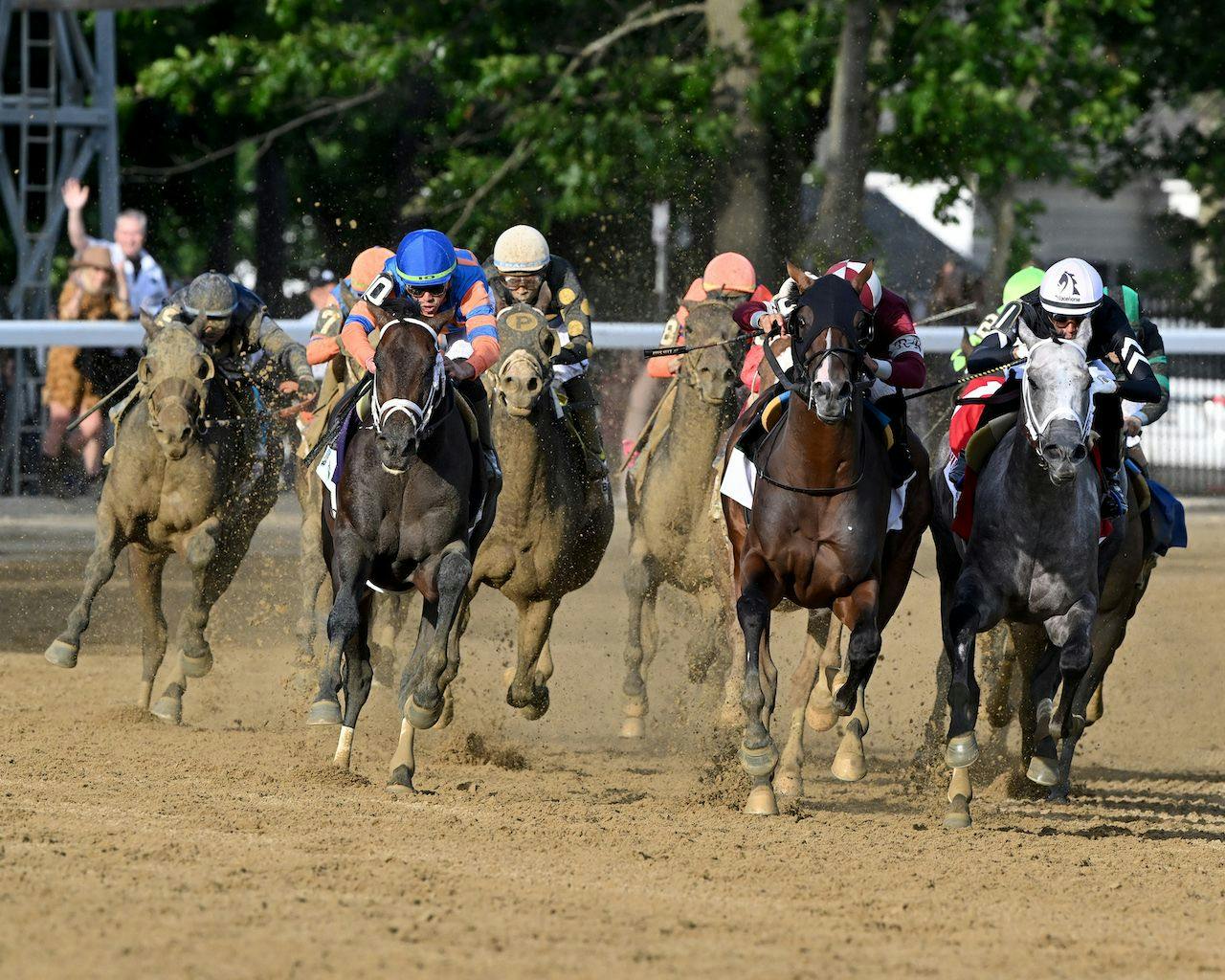STUDY: Is skipping the Preakness beneficial for Belmont horses?

Dornoch wins the Belmont S. (G1) during Belmont at Saratoga (Photo by Coglianese Photography)
We’ve all seen the statistics: Kentucky Derby (G1) starters who skip the Preakness (G1) to target the Belmont (G1) win the Triple Crown’s final leg with regularity. This strategy has proven successful on 10 occasions since 2004, and it’s by far the most common preparation approach employed by Belmont winners these days.
But does skipping the Preakness give these horses an advantage in the Belmont? Or has this prep approach simply become so widespread that victories are inevitable? Without knowing how many Kentucky Derby starters skip the Preakness to await the Belmont, as opposed to how many horses run in all three Triple Crown races, comparing the success rates of the two strategies is meaningless.
Dornoch wins the historical edition of the #BelmontStakes at Saratoga. 🏆
— TwinSpires Racing 🏇 (@TwinSpires) June 8, 2024
📸 Coglianese Photography pic.twitter.com/vcIDgV6RnH
Here’s a hypothetical (and extreme) example to illustrate what we mean—if 95% of Belmont starters run in the Kentucky Derby and skip the Preakness, but they win only 50% of Belmonts, they’re underperforming. If 5% of Belmont starters contest all three Triple Crown races, and they win 50% of Belmonts, they’re overperforming. In this hypothetical example, running in all three Triple Crown races is the better strategy, even though the two categories produce the same number of winners (50%) at first glance.
Fortunately, it doesn’t take a supercomputer to determine whether Kentucky Derby starters who skip the Preakness or horses who contest all three legs of the Triple Crown perform best in real-world Belmonts. All we need are some past performance records, a large handful of result charts, and a calculator.
Is skipping the Preakness beneficial for Belmont horses: research methodology
To ascertain whether skipping the Preakness results in a greater likelihood of a Kentucky Derby starter winning the Belmont, we’ll first tally up how many Kentucky Derby/Belmont starters have skipped the Preakness since 2004. Excluding 2020, when the Triple Crown races were run out of order due to COVID-19, this provides a 20-year sample size.
Then we’ll add up how many horses have contested all three legs of the Triple Crown during the same timeframe. Lastly, we’ll turn the number of winners, runners-up, third-place finishers, and in-the-money finishers produced by the two categories into percentages based on the number of horses in each category, so the two groups can be directly compared.
Is skipping the Preakness beneficial for Belmont horses: data analysis
The data isn’t necessarily what one might expect, but the results tell a fascinating story:
Records of Belmont Stakes starters, 2004-2024 (excluding 2020)
| Starts | Wins | Seconds | Thirds | In-the-money | |
| Skipped the Preakness Stakes | 75 | 10 (13%) | 9 (12%) | 9 (12%) | 28 (37%) |
| Contested entire Triple Crown | 26 | 3 (12%) | 3 (12%) | 3 (12%) | 9 (35%) |
Since 2004, 75 horses have run in the Kentucky Derby, skipped the Preakness, and returned for the Belmont. They have recorded 10 wins courtesy of Birdstone (2004), Jazil (2006), Summer Bird (2009), Union Rags (2012), Palace Malice (2013), Creator (2016), Tapwrit (2017), Essential Quality (2021), Mo Donegal (2022), and Dornoch (2024). That’s a 13% win rate.
In contrast, horses who contested all three legs of the Triple Crown have won the Preakness three times in the last 20 years. The winners were Afleet Alex (2005), American Pharoah (2015), and Justify (2018). But the sample size contains only 26 horses, so the win percentage for this category is 12%—nearly identical to the success rate for horses who skipped the Preakness.
Horses who passed on the Preakness have recorded nine seconds and nine thirds in the Belmont since 2004, which for each position is 12% of starters. Horses who ran in all three legs of the Triple Crown finished second three times and third three times, yielding matching 12% rates.
All told, horses who skipped the Preakness recorded 28 in-the-money finishes, representing 37% of starters. Horses who contested all three legs of the Triple Crown posted nine in-the-money finishes, a nearly identical 35% of starters.

Conclusions
When horseplayers handicap the Belmont, they shouldn’t assume Kentucky Derby starters who skipped the Preakness have a better chance to finish first, second, or third than horses who ran in all three Triple Crown races. Although the raw number of in-the-money finishers produced by the first category is about three times higher, the number of starters is likewise three times higher.
It leads to a stark conclusion: in the Belmont Stakes, there is no meaningful difference in the success rates of Kentucky Derby starters who skip the Preakness vs. those who compete in all three Triple Crown legs.
This isn’t to say that individual horses aren’t better suited to skipping the Preakness than running in all three races. Some of the Kentucky Derby starters who skipped the Preakness and recorded top-three finishes in the Belmont might have performed worse if they’d contested the Preakness in between.
But when Belmont day arrives and bettors must weigh the chances of each horse in the entries, there’s no statistical reason to doubt a runner who has proven durable enough to contest both the Kentucky Derby and Preakness. They’re almost exactly as likely to factor in the Belmont as Kentucky Derby starters who skip the Preakness.



